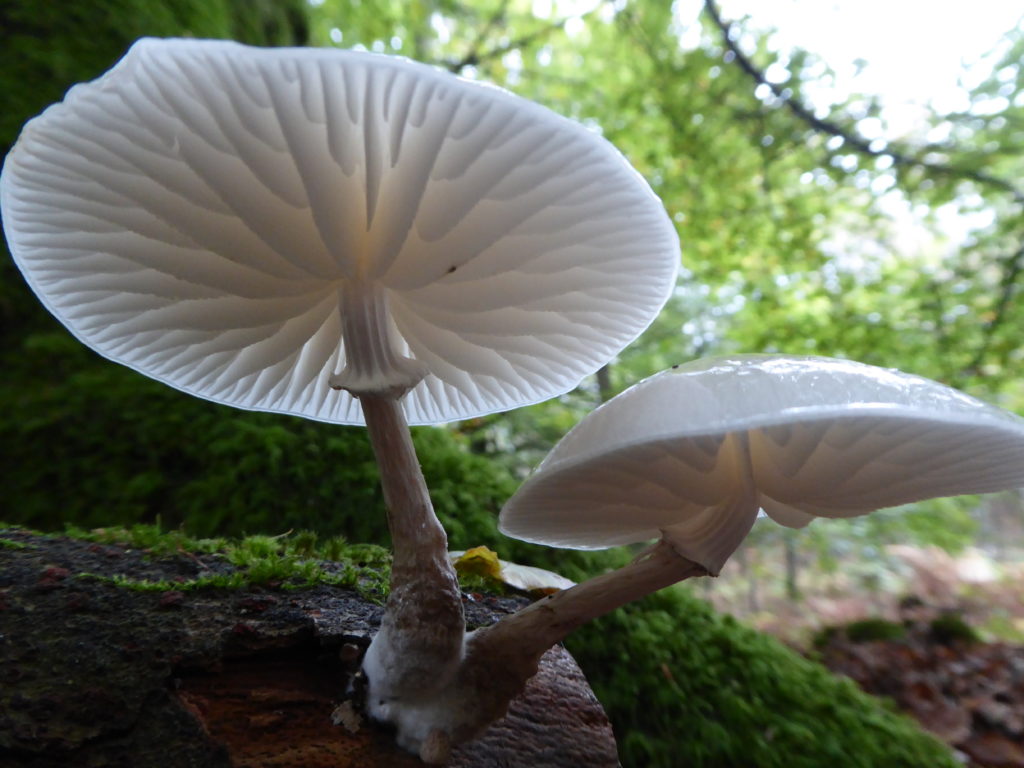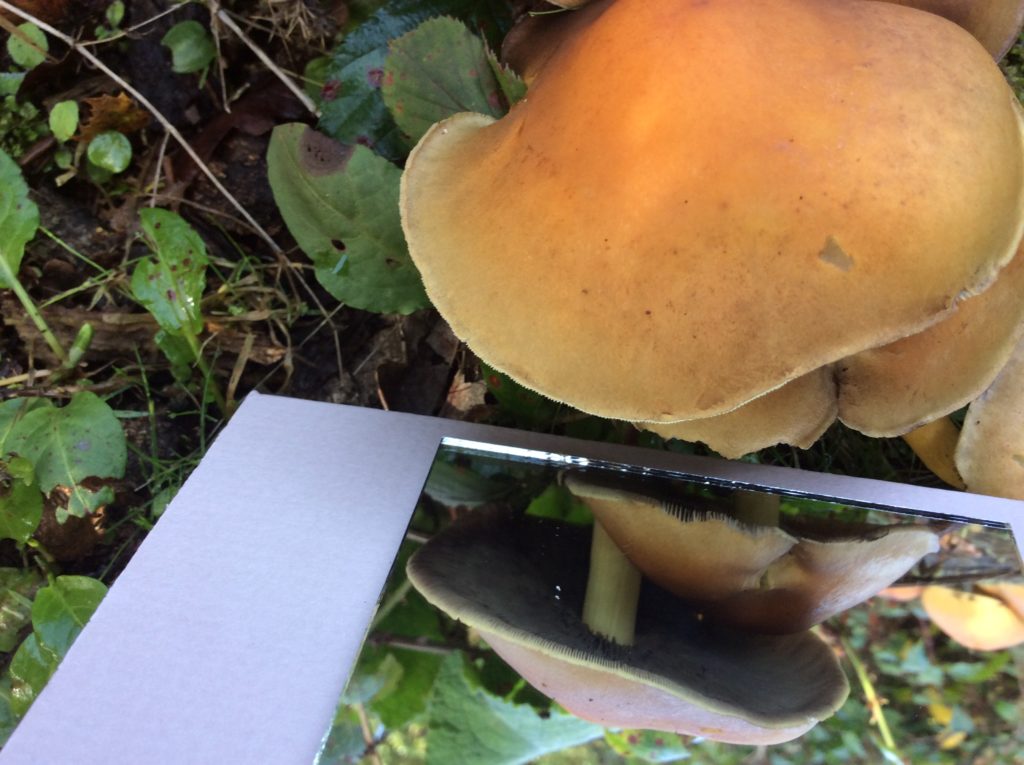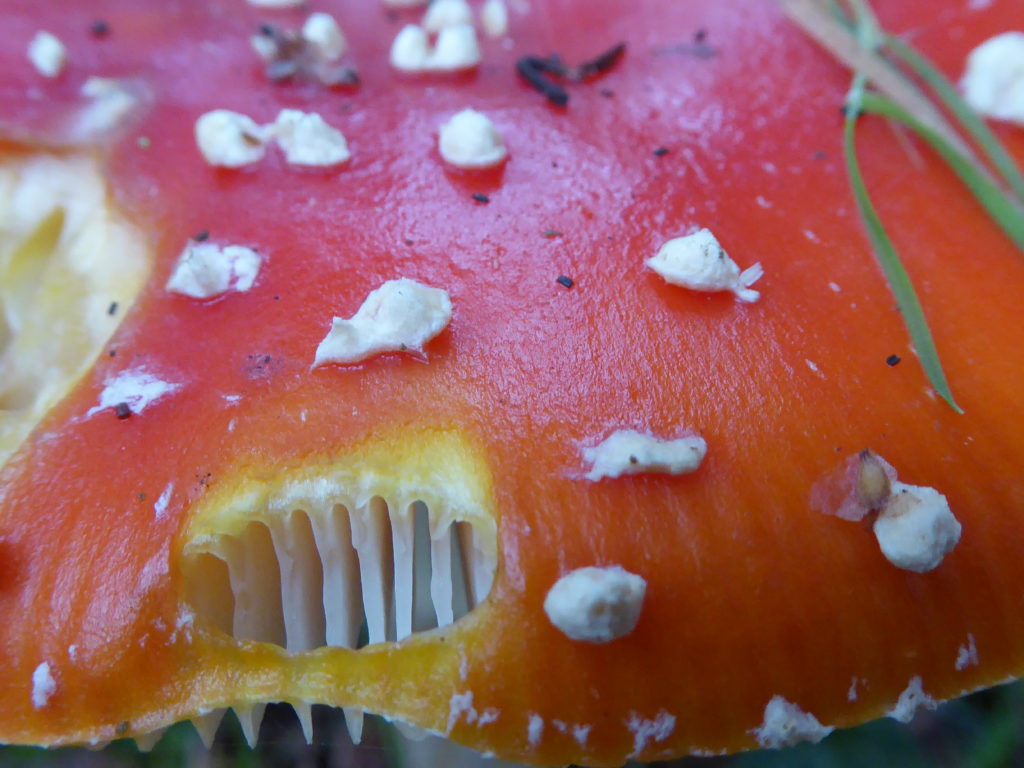
There are many wonderful subjects to photograph in the New Forest National Park but my favourite is without doubt mushrooms. A walk anywhere during the autumn amongst its woodlands, open heaths and grassy lawns will reveal a world of weird and amazing fungi in all its different colours, shapes, sizes and textures. Fungi in the New Forest are protected and cannot be picked to eat which recognises their essential role in the ‘web of life’ and conservation value. I have always preferred to hunt for fungi to photograph for both reference and endless creative opportunities. Here are some of my tips to create your own photographic identification guide:
Fruitbody shapes: Looking at the shape of a fungus, called the fruiting-body, is the first stage in identifying a species. Many fantastic shapes can be discovered – classic umbrella shapes, round puffballs, fan-like brackets and trumpets. Use a shallow depth of field to isolate your fungi from its background.
Colour and texture: These are very important characteristics to record but also can be the most variable as these change as the fungus matures. Rain will also dilute colours and wash away distinctive spotting on their caps. Take group shots to capture different stages of development and avoid shots after heavy rain which affects both texture, colour and size – fungi are 90 percent water and rain can swell fungi – distorting their shape which can result in misidentification.
Get down low: Take a small foam or gardening mat to kneel on, as you’ll need to get down low for many species. Use a mirror to look under the fungi cap to discover if it has gills (agaric type fungi) or pores (spongy-like tubes of the boletes). These are the spore-producing structures of fungi and an important feature for identification. The arrangement of gills is beautiful to photograph and captures subtle details to help identify species – are they crowded or widely spaced? Forked or wrinkled? What colour are the gills? These change colour as the fungus and spores mature.

Habitat detectives: Many fungi are habitat specialists to grassland, deciduous or conifer woodland, so a photograph of where they are found is important to aid identification. Many species have a specific relationship with the roots of certain trees or dead wood – so a photo including the surrounding trees, using a wide depth of field, will give a clue.
Size: I like to include fallen tree leaves (also aids habitat identification) or a pencil for scale. Fungi vary considerably in size during growth so a group shot of fungi at different stages will help with identification. Cap size and stem height are helpful features for reference / scale.
Get in close: Digital cameras have great macro modes for close-ups and abstract high-impact shots.

Painting with light: Although fungi cannot move – making them my perfect photographic subject – low light levels within woodlands can be a challenge. Use a small torch or mirror to help reflect light onto your subject. I love back-lit low shots looking up at gill patterns and textures which give dramatic, three dimensional images. A small tripod will help stabilise the longer shutter speeds needed.
Be creative and have fun exploring the amazing world of fungi!
